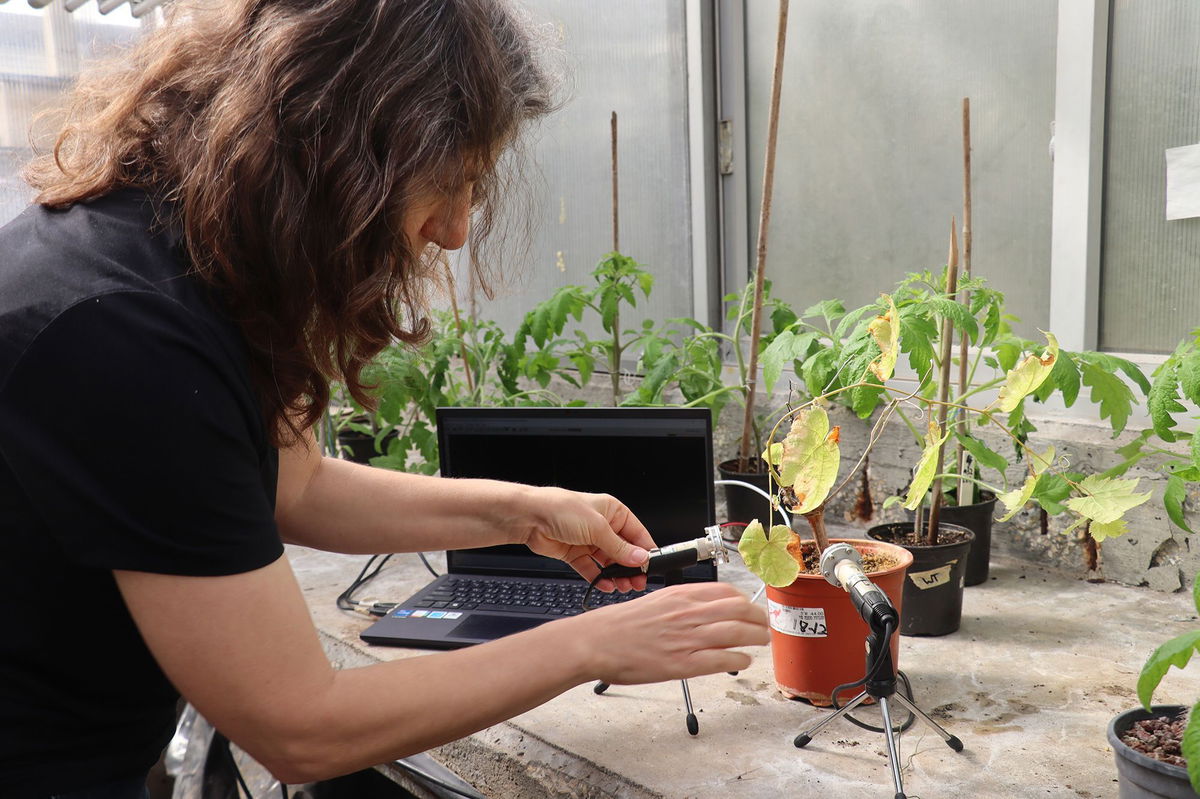In an extraordinary development in our knowledge of insect behavior, recent scientific studies have shown that moths can recognize sound signals from plants — and they seem to favor those that are less noisy when deciding on egg-laying locations. This finding changes long-standing beliefs about how insects relate with their surroundings and introduces new pathways for research in ecological communication.
The study’s findings suggest that moths, far from being passive navigators of the natural world, are acutely attuned to the subtle sounds emitted by the plants around them. More significantly, their ability to “listen” seems to influence crucial decisions, such as selecting host plants for their larvae. Plants that produce more sound — particularly those under stress or under insect attack — are often avoided.
Although it’s well-known that animals react to sounds, the notion that insects such as moths may react to the sound emissions of plants is quite new. So far, the interaction between insects and plants has been mostly explored through chemical signals: fragrances, pheromones, or visual indicators such as color and form. However, this auditory aspect introduces another layer to the intricate conversation of nature.
The process is both refined and understated. Plants experiencing stress — whether from lack of water, physical injury, or being fed on by herbivores — have the ability to release minuscule vibrations or ultrasonic noises. While these sounds cannot be heard by humans, they can be detected by other living beings. These vibrations might serve as indirect alerts of distress, possibly signaling low nutritional value, an increased number of predators, or a diminished likelihood of survival for any eggs deposited in the area.
Butterflies, it seems, have evolved to detect these sound signals. In tests, they routinely chose greenery emitting quieter noises — especially those that were thriving and not showing obvious distress. This implies that the sound characteristics of a plant are crucial in influencing insect choices, especially for those looking for the best spot for laying eggs.
This finding has profound implications for ecology, agriculture, and even pest management. If insects like moths are using sound to assess plant health, this raises questions about how widespread this phenomenon is. Could other insects also be using sound to make foraging or reproductive decisions? And might farmers one day use plant acoustics as a way to influence insect behavior, guiding pests away from crops without the use of chemicals?
In practical terms, this research could eventually contribute to more sustainable agricultural practices. By understanding how insects perceive the “soundscape” of a field, it may be possible to engineer environments that are acoustically unattractive to pests. This could be accomplished either by manipulating the sound profile of plants or by introducing non-harmful background noise that masks desirable plant cues.
There is also the intriguing possibility that plants themselves are using sound as a form of passive defense. By emitting ultrasonic cues under stress, they might be signaling to potential egg-layers that they are already compromised — a form of honesty that may benefit both plant and insect in the long run. The plant avoids further damage, and the insect avoids investing in a host that offers low survival prospects for its offspring.
What makes this progress particularly thrilling is that it transforms how we view plants as inactive beings. More and more, research is showing that plants are much more vibrant than we once thought. From transmitting chemical warnings to nearby plants to modifying their actions based on physical contact and even the orientation of light, plants actively engage in their environments. The inclusion of sound-based communication introduces an additional dimension to this expanding understanding of plant cognition and autonomy.
The implications for biodiversity are equally compelling. Understanding the nuanced ways in which plants and insects interact — beyond the visible and chemical — gives scientists a fuller view of ecosystem dynamics. It may explain behaviors in the wild that previously seemed random or unmotivated. Why do certain insects avoid perfectly healthy-looking plants? Why do infestations spread unevenly in a field? The answer may lie in the soundscape — in subtle signals that, until now, have gone unnoticed.
Further studies are required to investigate if this behavior is exclusive to particular moth species or part of a wider pattern seen in night-active insects. This observation also prompts questions about the sensitivity of these insects to various sound frequencies and patterns emitted by plants. Might certain frequencies serve as repellents or attractants? If this is the case, could we replicate those frequencies to influence insect behavior in controlled settings?
Moreover, there are potential concerns to consider. If insects rely on sound to locate suitable host plants, what happens in increasingly noisy habitats? Human activity has already been shown to interfere with animal communication in various ways. Could anthropogenic noise pollution disrupt these delicate interactions between moths and plants? And if so, what are the broader implications for ecosystems that depend on these relationships for balance?
An additional philosophical perspective warrants attention. The idea that insects decide their actions according to the sounds emitted by plants complicates the distinctions we typically establish among various life forms. It questions the conventional perception of the food chain as a straightforward hierarchy and prompts us to perceive nature as an interconnected web of ongoing, intricate exchanges — a realm where even the most subtle participants have a voice.
Although this research is in its initial phases, the possibilities it offers are extensive. The concept that plant sounds can influence insect actions creates opportunities for emerging scientific fields, connecting plant biology, entomology, and bioacoustics. It also encourages us to pay closer attention to our environment, not only using devices and detectors but with an appreciation for the unseen dialogues occurring daily.
As science continues to uncover the acoustic lives of plants and their insect neighbors, we are reminded that nature operates on levels far deeper and more intricate than our senses typically allow. With each discovery, we move closer to understanding — and perhaps participating in — the complex symphony of life that surrounds us.



